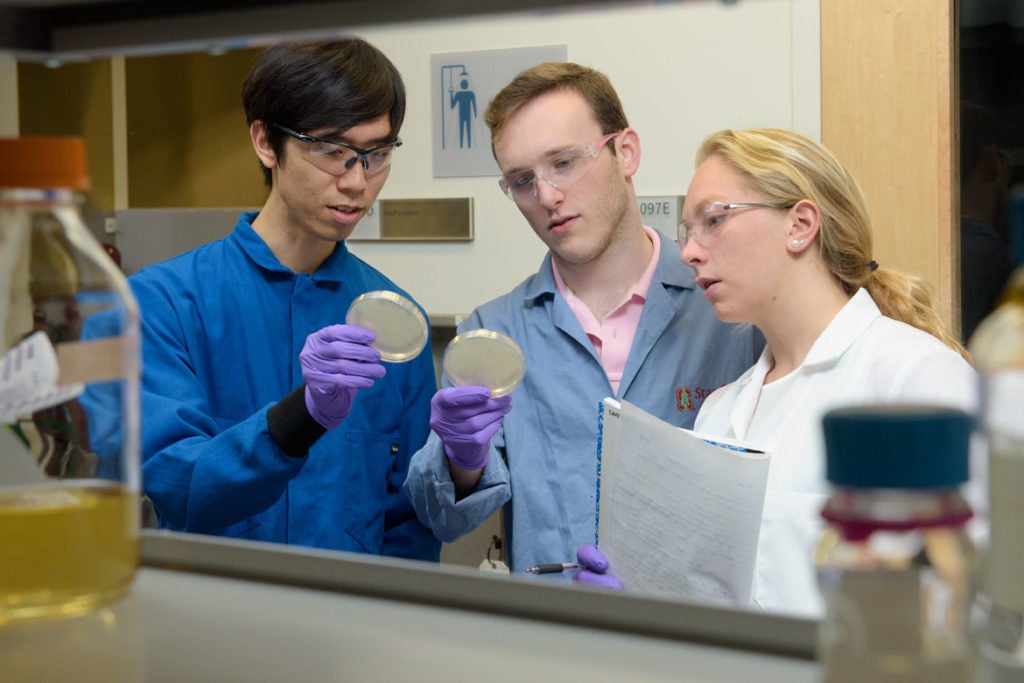Undergraduates developing antibiotics to fight superbugs

Antibiotics have reduced deadly infectious diseases such as tuberculosis, E. coli and tetanus to rare and treatable occurrences. Unfortunately, as antibiotic usage increases both in human health and agricultural sectors, bacteria are evolving resistance to these medications. Fatalities from antibiotic-resistant bacteria are projected to increase from 23,000 to 10 million people per year in the next 40 years if bacteria keep evolving at the current rate.
Just a few weeks ago, the first instance of bacteria resistant to the last-resort antibiotic colistin in the United States was observed, prompting the director of the Centers for Disease Control, Thomas Frieden, to warn that “it is the end of the road for antibiotics unless we act urgently.”
This mounting problem has become the focus of a group of undergraduate students at Stanford who, through support from a new research program from Stanford’s Chemistry, Engineering & Medicine for Human Health (ChEM-H) institute, are designing novel antibiotics from scratch that might one day stand up to superbugs.
Last October, Chaitan Khosla, director of ChEM-H and professor of chemistry and of chemical engineering, invited students to apply to an entrepreneurship program and selected two teams of undergraduates to tackle current health challenges. He also recruited Zach Sweeney, a biotech veteran and Stanford alum, and Cameron Gray, a scientist-turned-investor, to mentor the two groups.
One of the teams focused on the imminent threat of superbugs. Together, Christian Choe, Maria Filsinger Interrante, Zachary Rosenthal and Catherynn Vuong designed a scientific plan that included molecular designs for new antibiotics, a plan to clinically test them and a budget for the project.
“As soon as I started to read literature about multidrug-resistant bacteria, I decided it was a huge need area and interestingly neglected by the pharmaceutical industry,” said Filsinger Interrante, a senior in bioengineering and part of the undergraduate ChEM-H team. “Many factors combine to make antibiotic production unappealing to manufacturers, but three of the most important ones are smaller market size, the expectation of low pricing that minimizes profits and the development of resistance.”
Read the entire story in Stanford Report.
